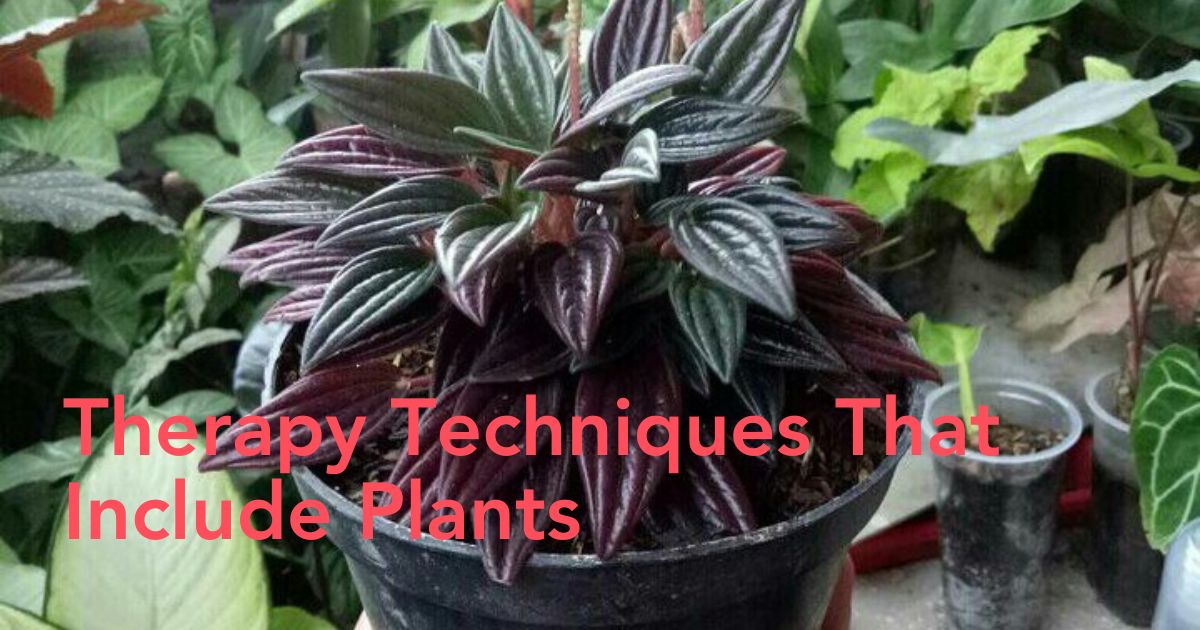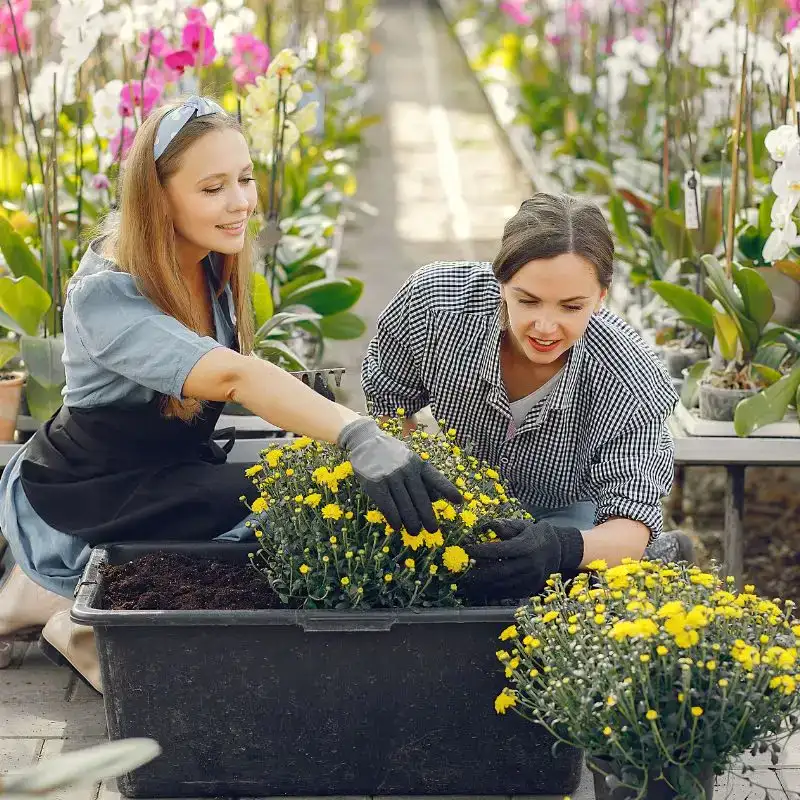We have several major studies showing that being around trees, plants, and green spaces boosts your mental health. Researchers found that nature exposure improves mood, reduces stress effects, boosts physical activity, enhances cognition, decreases aggression, and uplifts well-being.
People who incorporate greenery into their lives experience positive impacts on their social, psychological, and physical well-being (indoors or outdoors). So, it’s no wonder mental health specialists have designed therapy techniques that include plants.
Methods vary from aromatherapy with essential oils, which use plant extracts for relaxation, to gardening as a mindful activity that encourages focus and calmness.
The best part is that you can practice plant therapy at home or include these techniques in your daily routine. If you’re interested, we put together a list of easy-to-implement plant therapy techniques that can help you feel less stressed and more calm.

1. Aromatherapy: Using Essential Oils to Soothe the Mind
With aromatherapy, you don’t see the plants, but you still reap the benefits of their presence. This is a holistic healing practice that uses natural plant extracts, known as essential oils, to improve health and well-being. These oils are aromatic compounds extracted from flowers, leaves, bark, or roots.
Most people practice aromatherapy for its calming effects. When you breathe in the scents, it triggers responses in your brain that can enhance mood and promote relaxation. Plus, there are lots of different ways to integrate this technique into your life, such as:
- Diffusers: Place a few drops of essential oil into an electronic diffuser filled with water. The device disperses the scent throughout the room, creating a calming atmosphere.
- Topical Application: Mix essential oils with carrier oils like coconut or jojoba before applying to skin areas such as wrists or temples for stress relief.
- Baths: Incorporate essential oils into bathwater by adding several drops mixed with Epsom salts for relaxation during soaking.
- Massage Therapy: Blend them into massage lotions/creams to enhance the therapeutic touch benefits of a massage.
People have used essential oils for centuries across cultures, from ancient Egyptians to traditional Chinese medicine practices. Today, more people embrace this method because it's simple and effective.
2. Feng Shui with Plants: Creating a Harmonious Space
Feng shui, the ancient Chinese art of arranging spaces, often incorporates plants to promote balance and harmony.
The practice teaches you that you can enhance the flow of "chi" (energy) by strategically placing plants to create a calming environment. Certain plants are believed to have specific benefits. For instance, bamboo is thought to bring prosperity and peace, while jade plants symbolize growth and renewal.
Placement is also important in Feng Shui - a plant near your entryway invites good fortune inside, while a tall plant in the corner of the room helps remove stagnant energy in the room.

3. Indoor Plant Benefits for Mental Clarity and Calmness
Plants such as peace lilies, snake plants, and pothos help purify the air by removing toxins. This creates a healthier environment conducive to focus and relaxation. Cleaner air leads to improved cognitive function, which helps you stay focused on complex tasks.
Also, the visual presence of greenery itself provides psychological benefits. Studies have shown that viewing nature can lower stress levels and promote feelings of tranquility. Moreover, caring for indoor plants is quite satisfying.
However, if you’re suffering from anxiety, depression, or other mental health issues, plant therapy alone may not be enough. If this is the case, it’s best to consult a mental health specialist open to a holistic approach to mental well-being. If you don’t know where to find one, check out Different MHP - a program that will put you in touch with the right specialist.
4. Gardening as a Form of Mindful Meditation
There are many mental health benefits of gardening, such as stress reduction, improved mood, and increased mindfulness. Besides the physical activity outdoors, the act of tending to plants requires focus and patience. As you dig, plant, or water, each action becomes deliberate and present-centered.
Moreover, simply observing your plants grow and thrive makes you feel fulfilled. It’s a great way to cultivate your sense of resilience and learn that consistency is truly the right way to go.

5. Plant-Assisted Activities for Emotional Support
There are other ways to interact with plants other than growing them indoors or tending to a garden.
Let’s take Ikebana as an example. Ikebana is the Japanese art of flower arrangement that emphasizes harmony, balance, and simplicity. Unlike typical floral arrangements focused on blooms alone, ikebana considers every part of the plant (stems, leaves, and branches).
Practicing ikebana involves careful consideration of space and form. It's about creating an aesthetic composition where each element has its place and purpose. This approach reflects nature's beauty in a minimalistic yet profound manner.
Another approach is through plant-based art projects such as leaf pressing or making terrariums. Creating something beautiful from natural elements encourages creativity while offering an outlet for emotions in a constructive manner.
6. Incorporate Nature into Your Daily Routine
We live in crowded cities, surrounded by glass buildings and cars. This means that around 56% of the world’s population is disconnected from the life-giving force of nature. Still, there are things you can do to intentionally bring nature into your life.
Here are a few ideas:
- Start Your Day Outdoors: Begin mornings with a short walk or stretch outside. Fresh air and morning light invigorate your senses, setting a positive tone for the day.
- Lunch Al Fresco: Whenever possible, enjoy meals outside, even if it's just on a balcony or patio, to appreciate the surrounding greenery while you enjoy a meal.
- Nature Breaks: Schedule outdoor activities throughout your month, such as visiting a lavender field, hiking with friends, or simply taking longer walks in the nearby park.
- Weekend Gardening Projects: Dedicate weekends to simple gardening tasks, whether planting herbs in pots indoors or tending an outdoor plot.
Wrap Up
Incorporating plant therapy into daily life offers a practical approach to cultivating calmness. By integrating green spaces and mindful practices, you create a nurturing environment that supports mental clarity and emotional well-being. Embrace these techniques to transform ordinary moments into opportunities for tranquility amidst life's hustle.










